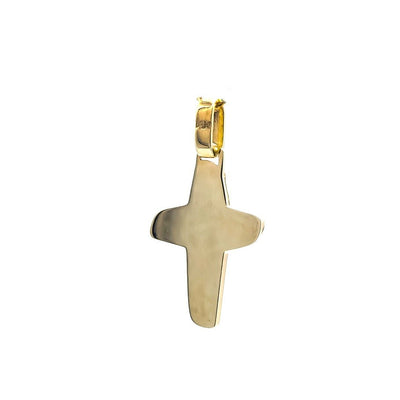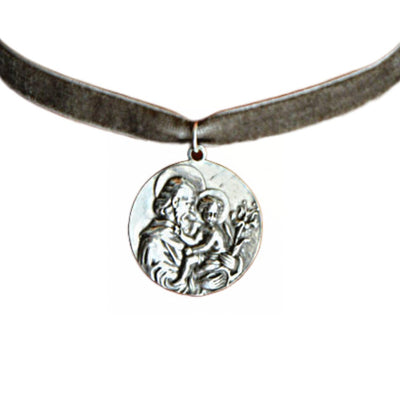The Timeless Symbolism of the Celtic Cross: A Deep Dive into Faith and Heritage
Introduction
The Celtic Cross is more than just a piece of history; it's a powerful symbol woven into the fabric of Catholic tradition. For Catholic women, especially those who hold their faith and heritage close, the Celtic Cross represents a tangible connection to spiritual and cultural roots.
What is the Celtic Cross?
At first glance, the Celtic Cross might seem like a simple variation of the Christian cross, but its design carries layers of significance. The most striking feature is the circular ring that intersects the arms of the cross. This circle, often interpreted as a symbol of eternity, reinforces the message of Christ's eternal love and sacrifice—a central tenet of the Catholic faith. The Celtic Cross reminds us that faith is not just a fleeting moment but an eternal journey.
Origins and Historical Significance
The Celtic Cross's origins are deeply rooted in Ireland's early Christian history and emerged between the 9th and 12th centuries when Irish missionaries spread Christianity throughout the British Isles and beyond. The design likely served as a visual tool for these missionaries, merging familiar pagan symbols with Christian iconography to help convert the local populations.
One popular legend attributes the creation of the Celtic Cross to St. Patrick, who is said to have drawn a cross over a pagan stone circle to sanctify it. This blending of traditions helped make the Christian message more accessible to the Celtic people, who revered circles as symbols of life and eternity. Whether or not this legend is true, the Celtic Cross quickly became a prominent symbol of faith in Ireland and Scotland, standing tall in monastic sites and serving as a focal point for prayer and reflection (My Irish Jeweler) (ShanOre).
Symbolism in Catholicism
Within Catholicism, the Celtic Cross is rich with symbolism. The cross itself, of course, represents the crucifixion of Jesus Christ and the salvation it brings. The circle, often interpreted as a symbol of eternity, adds a layer of meaning, reminding us of God's infinite love that knows no bounds. Some interpretations suggest that the circle also represents a halo, signifying Christ's divinity or the sun, an important symbol in Celtic culture. This connection between the cross and the circle beautifully illustrates the unity of heaven and earth, divine and human, eternal and temporal (Historyplex) (The Irish Road Trip).
For Catholic women, particularly those over 40 who have experienced life's ups and downs, the Celtic Cross can be a comforting reminder of God's enduring presence. It symbolizes strength, resilience, and a steadfast faith guiding them through joyful and challenging times.
Evolution of the Design
Over the centuries, the design of the Celtic Cross has evolved from its early, simple forms into more ornate and complex representations. The earliest Celtic Crosses were carved into large stone slabs, known as "high crosses," decorated with intricate patterns of Celtic knots and biblical scenes. These crosses served as religious symbols and as markers of important events or burial sites within monastic communities (My Irish Jeweler) (The Irish Road Trip).
As time passed, the Celtic Cross became a popular motif in various art forms, from jewelry to textiles. Today, the Celtic Cross is expected to be found on items such as necklaces, rosaries, and wall plaques, all of which serve as personal expressions of faith and heritage. The cross has also experienced a revival in modern times, particularly during the 19th-century Celtic Revival, which sought to rekindle interest in Ireland's ancient traditions (The Irish Road Trip).
Meaning for Catholic Women
For Catholic women, the Celtic Cross is more than just a religious symbol; it represents their personal and spiritual journey. It can serve as a reminder of their values—faith, family, and tradition. Whether passed down through generations as a family heirloom or chosen as a personal token of faith, the Celtic Cross resonates with women who find strength in their spiritual beliefs and cultural heritage.
Incorporating the Celtic Cross into Daily Life
Incorporating the Celtic Cross into daily life can be a meaningful way to keep faith at the forefront of your spiritual practice. Many Catholic women choose to wear the Celtic Cross as jewelry, such as a necklace or bracelet, keeping the symbol close to their hearts throughout the day. Others might display the cross in their home as a focal point for prayer or meditation.
The Celtic Cross can also be a powerful addition to a prayer space or altar, providing a visual reminder of God's eternal love and the enduring nature of faith. Whether through prayer, reflection or simply as a symbol of protection, the Celtic Cross offers a deep well of spiritual meaning that can enrich everyday life.
Browse Our Collection
If the Celtic Cross holds special meaning for you, we invite you to explore our collection of beautifully crafted cross necklaces and bracelets at GuadalupeGifts.com. Each piece reflects this iconic symbol's enduring strength and elegance, making it a perfect addition to your collection or a thoughtful gift for a loved one. Discover the ideal expression of your faith with our selection of jewelry that combines tradition with timeless style.
Additional Sources of Information
If you'd like to explore more about the history, symbolism, and significance of the Celtic Cross, here are some additional resources:
- The History, Meaning, and Symbolism of the Irish Celtic Cross - My Irish Jeweler
- Understanding the Symbolism and Meaning of a Celtic Cross - Historyplex
- The Meaning & Symbolism of Irish Celtic Crosses - ShanOre Irish Jewelry
- Celtic Cross Symbol: Meaning, History + Designs - The Irish Road Trip




















Leave a comment